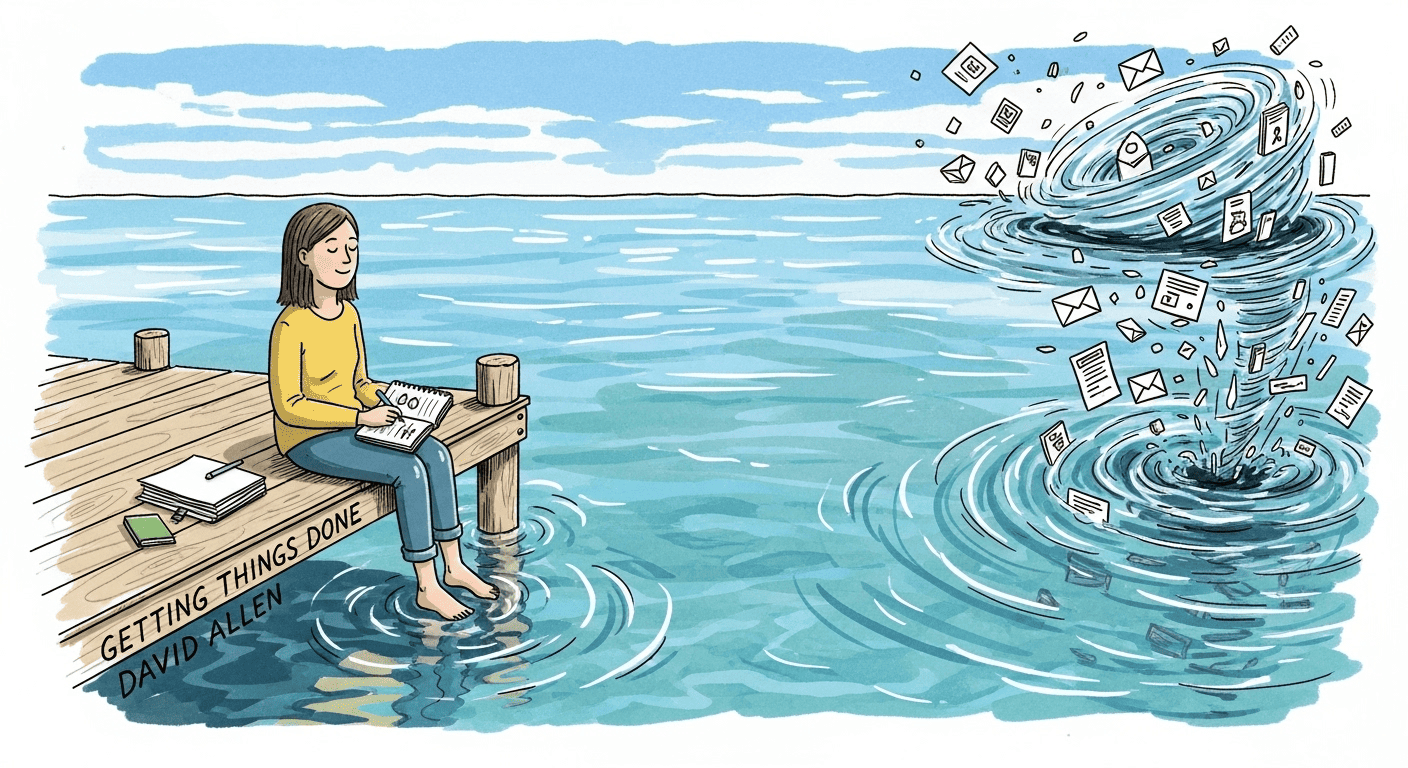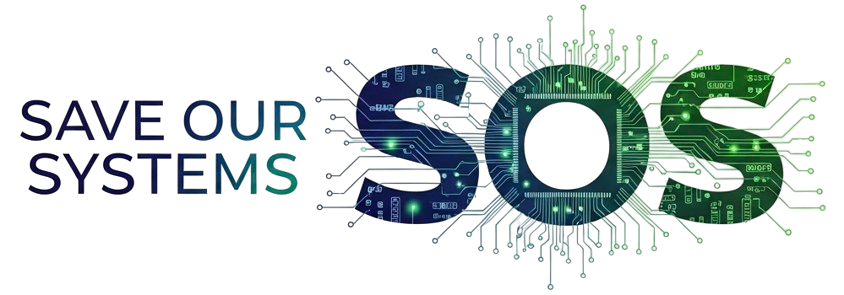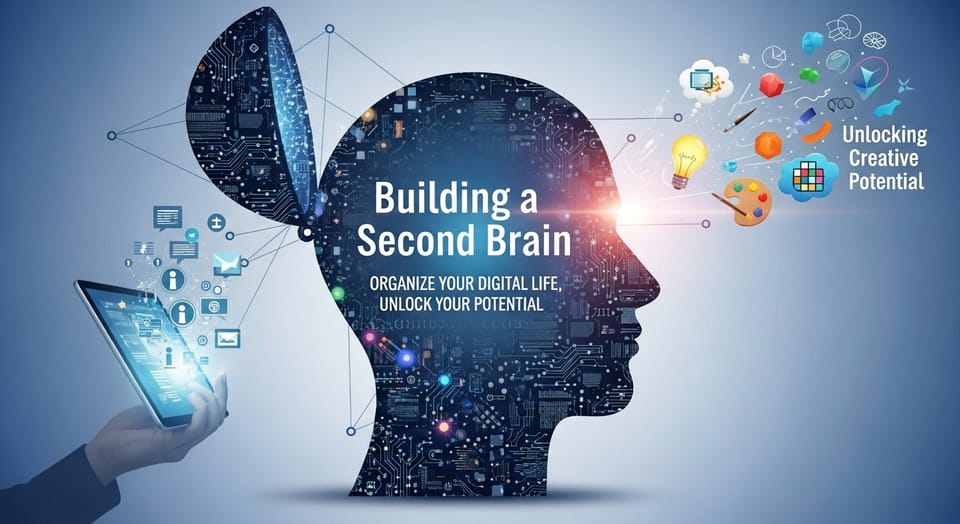Getting Things Done Book Review

Author: David Allen
Overview
David Allen's "Getting Things Done" (GTD) offers a comprehensive productivity system designed to help individuals manage the overwhelming demands of modern work and life. Published in 2001, this influential book presents a methodology focused on moving tasks out of your mind and into a trusted external system, allowing you to focus on taking action rather than remembering what needs to be done. Allen's five-step workflow process—capturing, clarifying, organizing, reflecting, and engaging—provides a practical framework for achieving what he calls "mind like water," a state of relaxed control over your commitments.
Why This Book Matters
In today's fast-paced, information-saturated world, cognitive overload is a common experience. Allen's GTD system addresses this modern challenge by offering a methodology that doesn't just help you manage tasks but fundamentally changes how you think about work and productivity. As Allen wisely notes, "The mind is for having ideas, not holding them"—a simple yet profound insight that forms the foundation of his approach.
What makes GTD particularly valuable is its flexibility and scalability. The system works equally well for managing simple to-do lists and complex multi-stakeholder projects. It can be implemented using anything from paper notebooks to sophisticated digital tools, making it accessible to everyone regardless of technological preference.
Key Concepts
The Mind as an Idea Generator, Not a Storage Device
One of Allen's most powerful insights is that our brains are designed for creative thinking, not for remembering commitments. As he eloquently puts it: "The mind is for having ideas, not holding them." This fundamental principle underpins the entire GTD methodology—by externally capturing everything that has our attention, we free our mental resources for higher-level thinking.
The Five-Step Workflow
Allen's workflow process provides a systematic approach to managing everything that demands our attention:
- Capture: Collect everything that has your attention in trusted external containers (inboxes)
- Clarify: Process what each item means and what action it requires
- Organize: Put items where they belong based on what they are
- Reflect: Review and update your system regularly
- Engage: Use your system to make appropriate choices about what to do next
The Two-Minute Rule
Allen offers a simple yet powerful principle: if an action takes less than two minutes, do it immediately rather than deferring it. This prevents small tasks from accumulating and creating unnecessary mental clutter.
Next Actions
Perhaps the most practical concept in the book is the idea of identifying the specific next physical action required to move a project forward. Allen notes: "Without a next action, there remains a potentially infinite gap between current reality and what you need to do." This simple practice eliminates ambiguity and reduces procrastination.
Personal Implementation
Reading this book was truly life-changing for me. It sparked my interest in examining all the systems in my life, both at work and at home. What initially made the GTD method click for me—and this might sound simple—was one of Allen's first recommendations: a physical inbox.
We all need physical inboxes for incoming mail, receipts, bills, and other documents. Having a designated place where everything goes creates clarity—you always know where to find items when it's time to process them.
While I personally find Allen's suggestion of using the inbox as a reminder system less effective due to my tech-oriented mindset, I definitely see its value for many people. What's most impressive about GTD is how many of its principles I've actually implemented in my daily life—far more than from most productivity books I've read.
Standout Insights
Throughout the book, Allen offers numerous gems of wisdom that have profoundly influenced my approach to work and life:
When a culture adopts "What's the next action?" as a standard operating query, there's an automatic increase in energy, productivity, clarity, and focus.
This simple question has become a productivity superpower in my daily work. Whenever a meeting ends ambiguously or a project seems stalled, asking "What's the next action?" immediately creates momentum and clarity.
How will you know when there's nothing left? When nothing else shows up as a reminder in your mind. When the only thing on your mind is the only thing on your mind, you'll be "present," in your "zone," with no distinction between work and play.
This description of mental clarity resonates deeply with my own experience. The moments of greatest productivity and satisfaction come when my mind is fully engaged with the present task, not distracted by uncaptured commitments.
In the fire zone of real work, if it takes longer than sixty seconds to file something where it belongs, you won't file, you'll "stack."
This practical insight about human behavior has helped me design more effective organizational systems. Making organization frictionless is key to maintaining it over time.
Limitations
While GTD offers a comprehensive productivity framework, some readers might find the system initially overwhelming to implement in its entirety. Allen acknowledges this challenge and suggests starting with small changes rather than attempting a complete overhaul.
Additionally, the book was written before the explosion of digital tools and mobile devices, though Allen's methodology has proven remarkably adaptable to technological changes. The principles remain sound even as the specific tools evolve.
Final Thoughts
Allen reminds us that productivity tools are enablers, not solutions: "Your ability to generate power is directly proportional to your ability to relax. No tools can give you that ability—they can only support it. A great hammer doesn't make a great carpenter; but a great carpenter will always want to have a great hammer."
Getting Things Done offers more than just a productivity system—it provides a path to what Allen calls "mind like water," a state of relaxed control where you can respond appropriately to whatever life throws at you. By implementing even portions of the GTD methodology, readers can experience significant improvements in their productivity, stress levels, and overall satisfaction.
Rating
★★★★★ (5/5)




